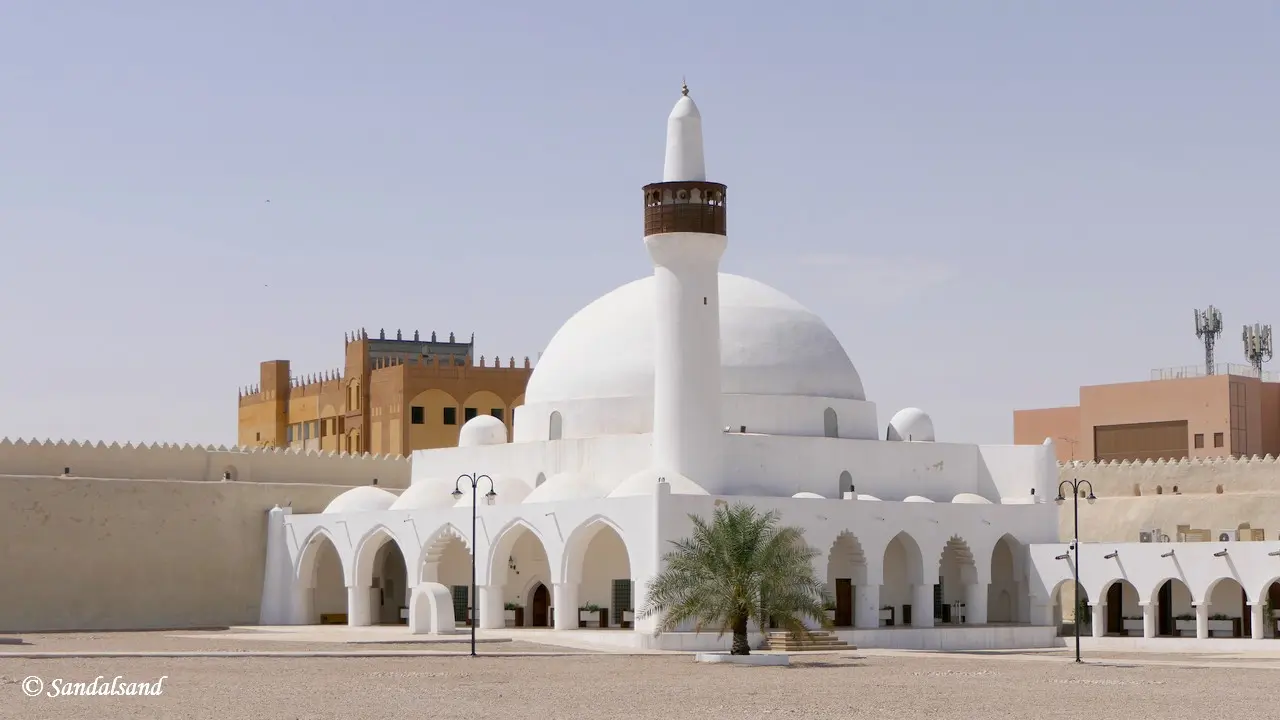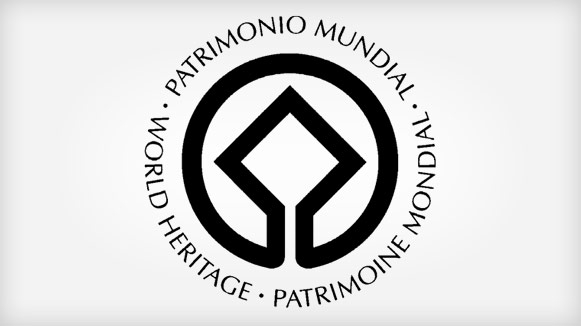In 2018 we welcomed 19 new World Heritage Sites. UNESCO’s World Heritage Committee has held its annual meeting, this time in Bahrain. The new sites on the World Heritage List brought the total number up to 1092.
Get an abstract from UNESCO’s justification including direct links to the inscriptions in the text below. Seek more information about the work of the committee from the WHC website. Read up on Sandalsand’s main story about World Heritage Sites and the task of visiting the ever-growing number of new sites.
The 42nd session of the World Heritage Committee took place in Manama, Bahrain from 24 June to 4 July 2018. There were 22 cultural, 6 natural and 3 mixed sites put forward for consideration, in total 31. 19 of the sites passed the test and the rest were sent back to the participating state party (country) for further development. In addition there was an additional vote in favour of extending an existing natural site more than three times, the #766 Bikin River Valley.
As usual many of the sites, this year 13, were serial sites. This means that they consist of several component elements, in 2018 as many as 255 elements. The large majority of the 255 proposed elements belonged to one singular site, called “Funeral and memorial sites of the First World War (Western Front)”.
13 new cultural sites
#1450 Thimlich Ohinga archeological site (Kenya). A dry-stone walled settlement probably built in the 16th century CE. It served as a fort for communities and livestock, but it also defined social entities and relationships linked to lineage. Thimlich Ohinga is the largest and best preserved of these traditional enclosures.
#1470, Naumburg Cathedral (Germany). Construction began in 1028 and viewed as an outstanding testimony to medieval art and architecture. Its Romanesque structure, flanked by two Gothic choirs, demonstrates the stylistic transition from late Romanesque to early Gothic.
#1480 Victorian Gothic and Art Deco Ensemble of Mumbai (India). Having become a global trading centre, the city of Mumbai implemented an ambitious urban planning project in the second half of the 19th century. It led to the construction of ensembles of public buildings bordering the Oval Maidan open space. Style-wise they started with Victorian Neo-Gothic and then, in the early 20th century, in Art Deco.
#1495 Hidden Christian Sites in the Nagasaki Region (Japan). The 12 components of the site consist of ten villages, Hara Castle and a cathedral. They were built between the 16th and 19th centuries. Together they reflect the earliest activities of Christian missionaries and settlers in Japan.
.
#1537 Ancient City of Qalhat (Oman). The site includes the ancient city of Qalhat, surrounded by inner and outer walls, as well as areas beyond the ramparts where necropolises are located.
#1538 Ivrea, industrial city of the 20th century (Italy). It comprises a large factory and buildings designed to serve the administration and social services, as well as residential units. It was designed by leading Italian urban planners and architects, mostly between 1930 and the 1960s. This architectural ensemble reflects the ideas of the Community Movement (Movimento Comunità).
#1553 Archaeological Border Complex of Hedeby and the Danevirke (Germany). The remains of a trading town with traces of roads, buildings, cemeteries and a harbour dating back to the 1st and early 2nd millennia CE. It is enclosed by part of the Danevirke, a line of fortification crossing the Schleswig isthmus. Because of its rich and well preserved archaeological material, it has become a key site for the interpretation of economic, social and historical developments in Europe during the Viking age.
#1557 Aasivissuit-Nipisat, Inuit Hunting Ground between Ice and Sea (Denmark). The site contains the remains of 4,200 years of human history. It is a cultural landscape which bears witness to its creators’ hunting of land and sea animals, seasonal migrations and a rich and well-preserved tangible and intangible cultural heritage linked to climate, navigation and medicine.
.
#1562 Sansa, Buddhist Mountain Monasteries in Korea (Republic of Korea). The spatial arrangement of the seven temples that comprise the site, was established from the 7th to 9th centuries. They present common characteristics that are specific to Korea – the “madang” (open courtyard) flanked by four buildings (Buddha Hall, pavilion, lecture hall and dormitory).

The Ibrahim Palace in the Al-Ahsa Oasis, Saudi Arabia
#1563 Al-Ahsa Oasis, an Evolving Cultural Landscape (Saudi Arabia). With its 2.5 million date palms, it is the largest oasis in the world. Al-Ahsa is also a unique geocultural landscape and an exceptional example of human interaction with the environment.
#1568 Sassanid Archaeological Landscape of Fars region (Islamic Republic of Iran). Eight fortified structures, palaces, and city plans date back to the earliest and latest times of the Sassanian Empire. This empire stretched across the region from 224 to 658 CE.
#1560 Caliphate City of Medina Azahara (Spain). A city built in the mid-10th century CE by the Umayyad dynasty as the seat of the Caliphate of Cordoba. It was laid to waste during the civil war that put an end to the Caliphate in 1009-10. It provides in-depth knowledge of the now vanished Western Islamic civilization of Al-Andalus, at the height of its splendour.
.
#1572 Göbekli Tepe (Turkey). This site presents monumental circular and rectangular megalithic structures, interpreted as enclosures. They were erected by hunter-gatherers in the Pre-Pottery Neolithic age between 9,600 and 8,200 BC.
3 new natural sites
#1434 Chaine des Puys – Limagne fault tectonic arena (France). An emblematic segment of the West European Rift, created in the aftermath of the formation of the Alps, 35 million years ago. The geological features of the property demonstrate how the continental crust cracks, then collapses, allowing deep magma to rise and cause uplifting at the surface.
#1575 Barberton Makhonjwa Mountains (South Africa). One of the world’s oldest geological structures. The Barberton Makhonjwa Mountains represents the best-preserved succession of volcanic and sedimentary rock dating back 3.6 to 3.25 billion years, when the first continents were starting to form on the primitive Earth. It features meteor-impact fallback breccias resulting from the impact of meteorites formed just after the Great Bombardment (4.6 to 3.8 billion years ago).
#1559 Fanjingshan (China). Fanjingshan ranges in altitude between 500 metres and 2,570 metres above sea level, favouring highly diverse types of vegetation and relief. It is an island of metamorphic rock in a sea of karst, home to many plant and animal species which originated in the Tertiary period, between 65 million and 2 million years ago. The site’s isolation has led to a high degree of biodiversity with endemic species. Fanjingshan has the largest and most contiguous primeval beech forest in the subtropical region.
3 new mixed sites
#1174 Chiribiquete National Park – “The Maloca of the Jaguar” (Colombia). One of the defining features of the park is the presence of tepuis (the Native American word for table-top mountains), sheer-sided sandstone plateaux that dominate the forest. Over 75,000 paintings, spanning more than 20,000 years to the present, are to be seen on the walls of the 60 rock shelters around the bases of the tepuis.
#1415 Pimachiowin Aki (Canada). “The Land That Gives Life” is a forest landscape crossed by rivers and studded with lakes, wetlands, and boreal forest. It forms part of the ancestral home of the Anishinaabeg, an indigenous people living from fishing, hunting and gathering.
#1534 Tehuacán-Cuicatlán Valley: originary habitat of Mesoamerica (Mexico). It lies within an arid or semiarid zone with one of the highest levels of biological diversity in North America. This gave rise to human adaptations crucial to the emergence of Mesoamerica, one of the cradles of civilisation in the world. Large “cacti-forests” shape some landscapes of the Valley making it one of the most unique areas in the world.
Round-up
With so many new sites added to the List, it all adds to the elusiveness of actually being able to visit all sites in a lifetime. I have not been to any of the new 2018-sites. Subsequently I’m already looking forward to adding these, or at least some of the other Heritage Sites to my bucket list. Likewise, I’m looking forward to the 2019 additions to the List, some time in June next year.


